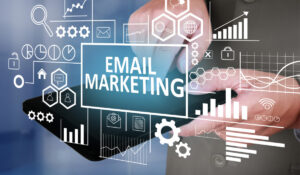In today’s digital-first marketplace, two marketing strategies often dominate conversations about online growth—Search Engine Optimization (SEO) and Pay-Per-Click (PPC) advertising.
Both offer particular benefits, but which is most beneficial to your company?
The answer isn’t straightforward. It depends on your goals, resources, timeline, and how competitive your industry is.
At Topline Media Group, we specialize in helping brands navigate these choices. Our services range from custom SEO campaigns to high-performance PPC management, giving our clients a competitive edge in a rapidly evolving digital world.
This article breaks down the key differences, advantages, and considerations between SEO and PPC—so you can confidently decide how to drive traffic, leads, and sales in a way that fits your business.
What is SEO?
Search Engine Optimization (SEO) is a long-term strategy focused on increasing your website’s visibility in organic (non-paid) search results.
This includes optimizing on-page content, improving site architecture, enhancing technical performance, and building backlinks from authoritative websites.
The real power of SEO lies in sustainability. Once your pages rank well, they can generate consistent traffic without ongoing ad spend.
Key Benefits of SEO
Long-Term ROI: While SEO requires upfront investment—whether in content creation, technical audits, or outreach—the returns are compounding. You’ll receive free, high-quality traffic as your site becomes more authoritative and ranks for more keywords.
Builds Trust and Credibility: Users were more likely to trust organic results than ads. Your brand gets trust and respect in your niche when it shows up on Google’s first page for pertinent searches.
Evergreen Traffic Source: Your optimized pages can rank for months or even years with the right strategy, passively earning traffic while you concentrate on other aspects of your company.
Synergy with Other Channels: By increasing the overall quality of your digital assets, SEO also helps with social media, content marketing, and even sponsored advertisements.
Challenges of SEO
It Takes Time: SEO is not a “quick win” tactic. Depending on your industry’s competitiveness, it can take three to six months—or longer—to see significant results.
Search Algorithm Volatility: Search engines update their algorithms frequently. If your SEO foundation isn’t strong, rankings can drop due to changes in how search engines evaluate sites.
High Competition: If you’re in a saturated industry, ranking on page one can be extremely difficult—especially if your competitors have strong domains, large content libraries, or ongoing SEO investments. Breaking through often requires significant effort and time.
Constant Content Demand: To stay relevant and maintain rankings, you must consistently publish high-quality, optimized content. This can be resource-intensive, especially for small teams without dedicated writers or strategists.
Technical Complexity: SEO isn’t just about keywords. Factors like site speed, mobile responsiveness, crawlability, schema markup, and indexation can heavily influence rankings. These often require technical expertise and ongoing maintenance.
What is PPC?
A particular kind of digital marketing is pay-per-click (PPC) advertising, in which you pay for showing your target audience advertisements.
Platforms like Google Ads and Meta Ads (formerly Facebook Ads) allow you to show up instantly at the top of search results or in front of highly targeted demographics.
Unlike SEO, PPC gets results fast—but the traffic stops as soon as the ads do.
Key Benefits of PPC

Instant Visibility: Once your campaign is live, your brand appears right away. This is perfect for new product launches, time-sensitive promotions, or lead generation campaigns.
Precise Audience Targeting: PPC platforms allow you to filter audiences by search intent, location, device, age, gender, and even user behavior. You can make sure every ad dollar is spent on someone likely to convert.
Measurable Performance: With clear metrics like cost-per-click (CPC), conversion rate, and return on ad spend (ROAS), PPC allows for continuous optimization. You can test creatives, landing pages, and bidding strategies in real-time.
Excellent for Local and Niche Campaigns: PPC is especially powerful for local businesses looking to dominate specific geographies or for industries with high margins where every lead counts.
Challenges of PPC
Cost Can Add Up Quickly: In competitive industries, cost-per-click can be high. Without a well-optimized funnel, you could end up spending a lot for little return.
Ad Fatigue: If your target audience sees the same ads repeatedly, performance can decline. Successful PPC campaigns require regular creative refreshes and split testing.
Pay-to-Play Model: Unlike SEO, PPC doesn’t build equity.Your visibility disappears after your ad budget is depleted.
When to Prioritize SEO
SEO is best when you’re focused on:
- Building long-term online presence.
- Reducing customer acquisition costs over time.
- Establishing thought leadership in your industry.
- Targeting research-heavy buyer journeys (e.g., B2B services, complex purchases).
- Creating a content library that continues to generate leads.
For instance, if you’re an eCommerce business or SaaS brand aiming for sustainable lead generation, SEO allows you to own critical keywords in your niche and keep generating traffic without constantly running ads.
When to Prioritize PPC
PPC works best when:
- Right now, you need outcomes, like leads, sign-ups, or sales.
- You’re launching a new product or service.
- SEO competition is too high or takes too long to overcome.
- You’re targeting a specific event, date, or season.
- You’re testing new offers or markets before scaling.
Startups, local businesses, and high-margin service providers (like real estate, law, or medical practices) often benefit from PPC as it gets them on the map fast while they build out their SEO.
SEO vs. PPC: Which Is More Cost-Effective?
Cost-effectiveness varies based on your business model.
- Short term: PPC wins for speed, flexibility, and quick conversions—but it costs more per lead.
- Long term: SEO becomes more economical over time as your cost-per-acquisition drops and organic rankings kick in.
A key insight from our client campaigns at Topline Media Group is that businesses that invest in both strategies tend to outperform those who rely on just one.
The Ideal Strategy: SEO + PPC = Growth Engine
Smart marketers aren’t choosing between SEO and PPC—they’re combining them.
Here’s why integrating both works so well:
PPC Informs SEO: Running PPC campaigns gives you data on which keywords convert, which headlines work, and which audience segments respond. This data helps shape your content and SEO keyword targeting.
SEO Reduces Long-Term Paid Dependence: As your organic presence strengthens, you can reduce ad spend in areas where you rank well, reserving your PPC budget for competitive or seasonal opportunities.
PPC Promotes SEO Content: You can use PPC to drive traffic to new blogs, landing pages, or products—giving them the visibility they need to gain engagement and backlinks, both important SEO signals.
Retargeting with PPC Complements SEO Discovery: Most organic visitors won’t convert on the first visit. PPC remarketing helps bring them back, improving your conversion rate and maximizing your content’s ROI.
How Topline Media Group Can Help
One-size-fits-all solutions are not anything we at Topline Media Group believe in. Our team crafts customized digital marketing campaigns that blend SEO and PPC to help businesses scale smarter, not harder.
Our SEO services include:
- Technical site audits
- Keyword strategy & content creation
- On-page & off-page optimization
- Local SEO for service-based businesses
Our PPC management covers:
- Google Ads & Bing Ads strategy
- Paid social (Facebook, Instagram, LinkedIn)
- A/B testing, audience segmentation, and remarketing
- ROI tracking and performance reporting
Whether you’re starting from scratch or scaling an established brand, we tailor our strategies to your goals and budget.
Final Thoughts
Choosing between SEO and PPC shouldn’t feel like a tug-of-war. Instead, think of them as two powerful tools in your digital toolbox.
If you need fast results, go with PPC. If you’re investing in long-term visibility and authority, go with SEO. But if you’re serious about growth, combine both.
A blended strategy allows you to capture both quick wins and lasting gains—Do you need help choosing the optimal approach for your company?
Let’s talk. At Topline Media Group, we’re passionate about helping brands like yours grow smarter and faster—on your terms.
FAQ’s
Is SEO better than PPC for small businesses?
For quick visibility and leads, PPC works well. For long-term traffic and credibility without ongoing ad spend, SEO is more cost-effective. Many small businesses use PPC to get started, then shift focus to SEO for sustainable growth.
How long does it take to SEO to deliver results?
Typically 3 to 6 months, depending on competition and strategy quality.
While it takes time, SEO eventually pays off. If you’re in a competitive niche, patience is key—but once your content ranks, the results often last without extra cost.
What if I don’t have a big marketing budget—should I choose PPC or SEO?
SEO is more budget-friendly long term, but slower to show results. PPC can drain a small budget quickly, especially in competitive industries. SEO takes longer, but once it gains momentum, it brings in traffic without ongoing costs.
Can I pause SEO like I do with PPC ads?
With PPC, traffic stops when ads stop. SEO keeps working in the background, even if you reduce efforts. Just be sure to maintain content and rankings against competitors and algorithm updates.
What’s the advantage of using both SEO and PPC together?
PPC delivers fast data and results; SEO builds lasting visibility. Used together, you get fast traction and long-term growth. PPC also supports SEO by promoting content and identifying top-converting keywords.



